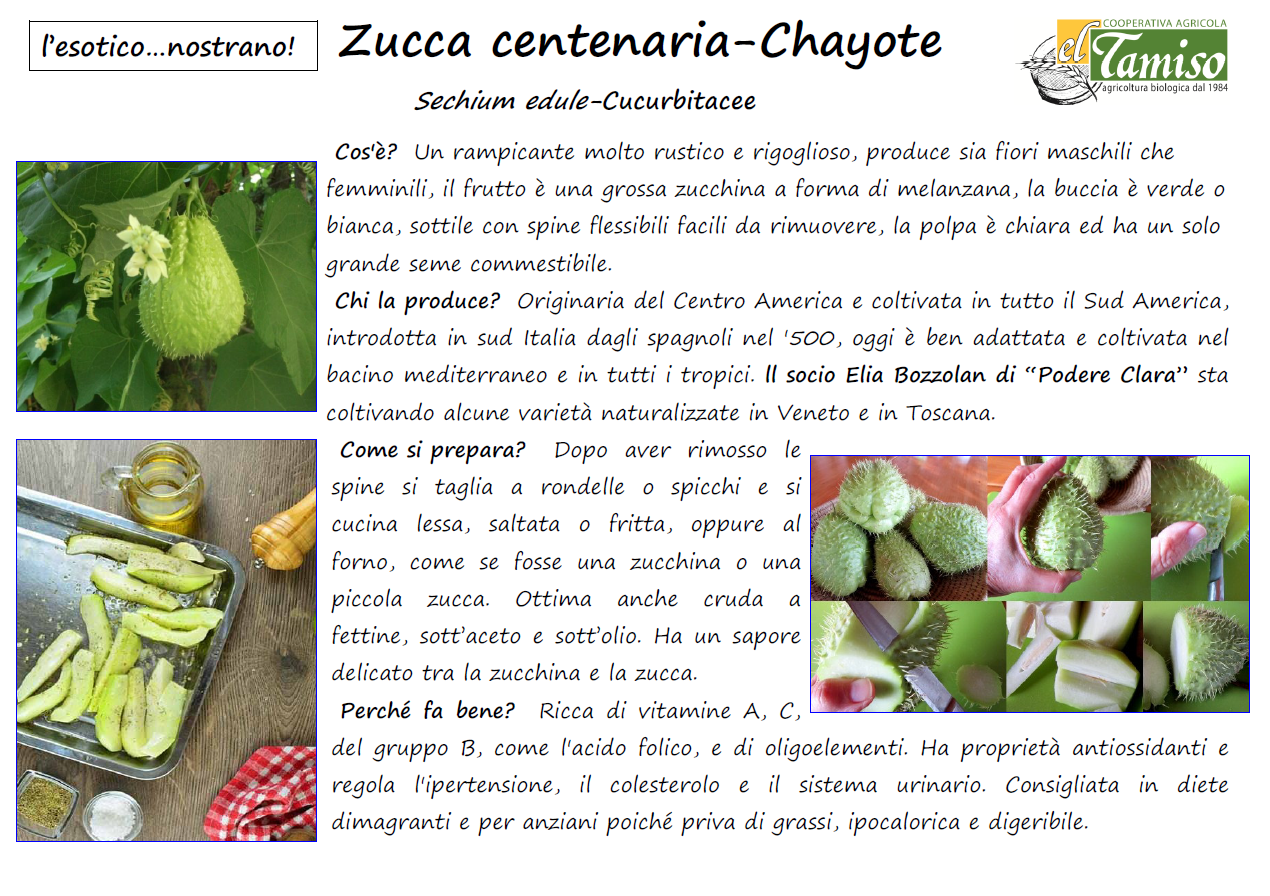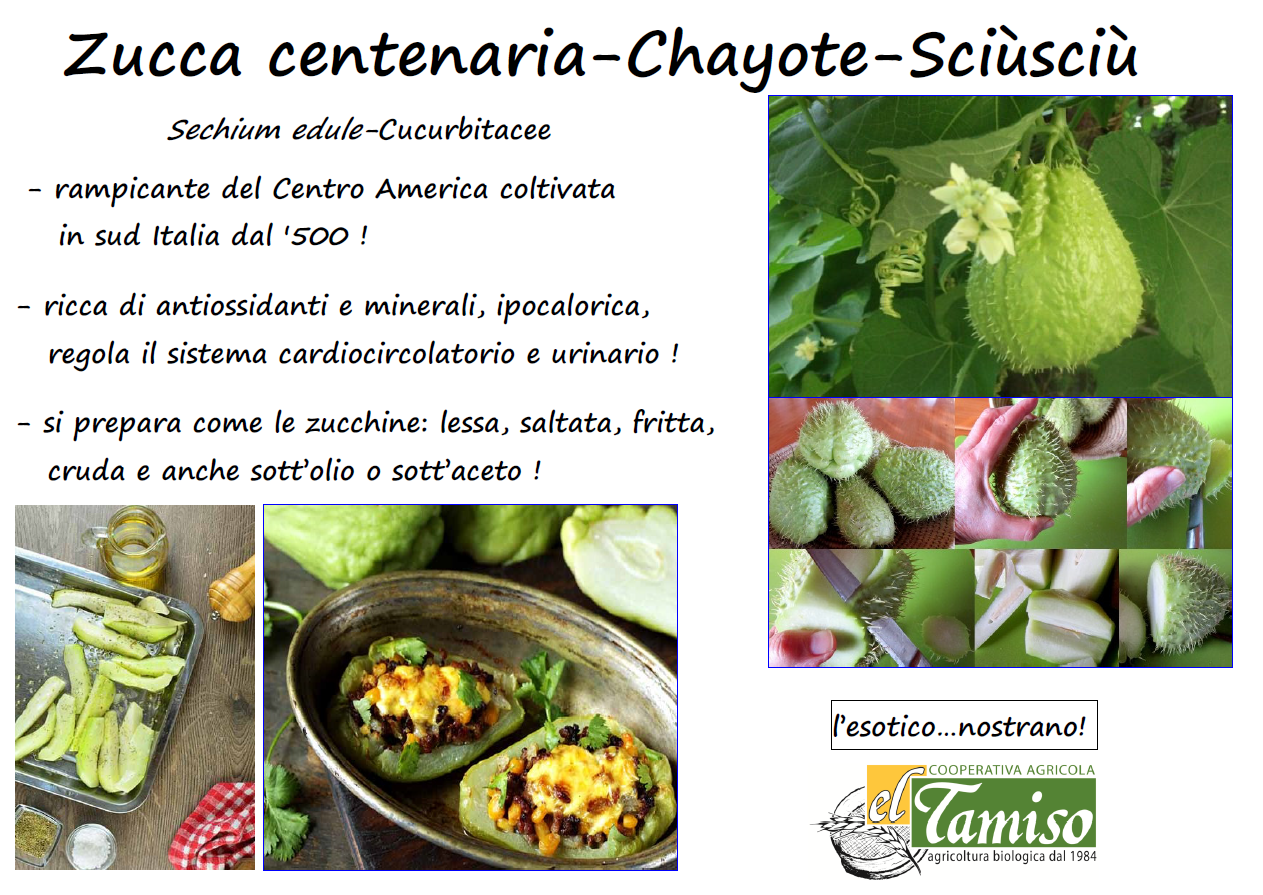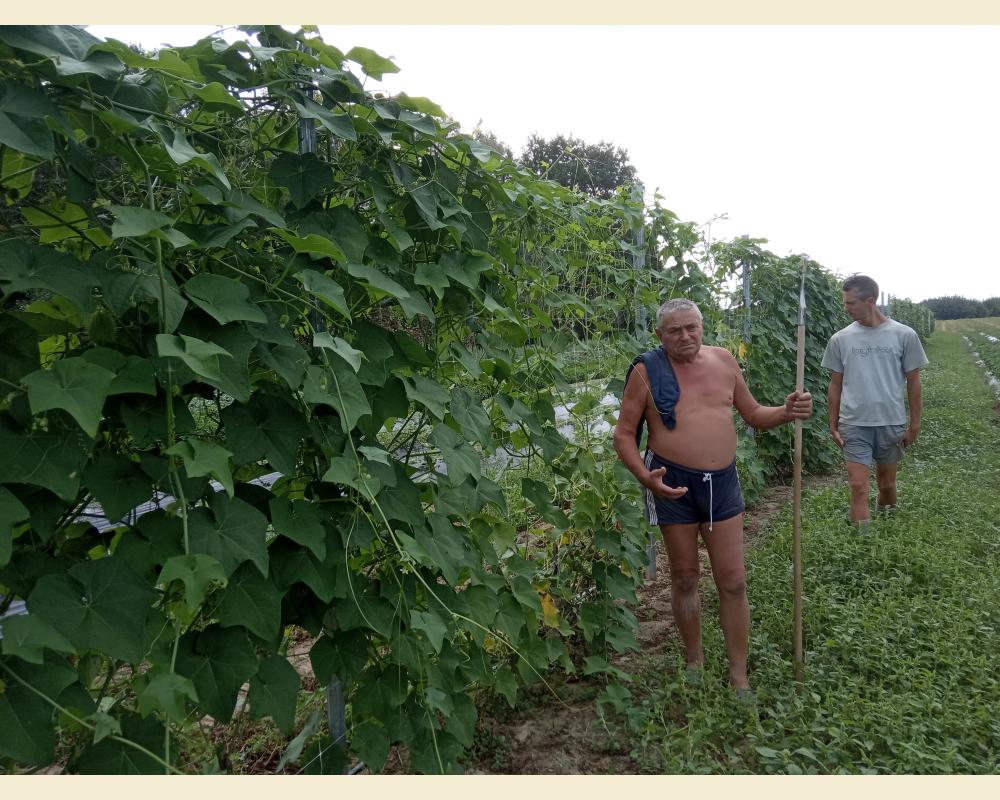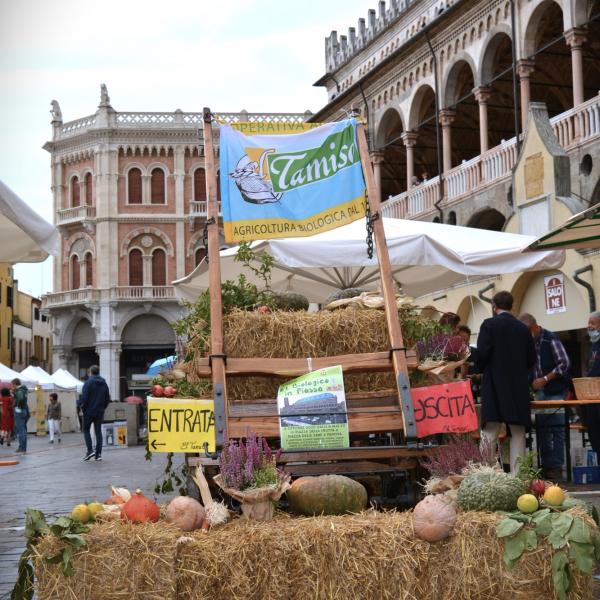The exotic... homegrown! Hundred-year-old pumpkin in Legnaro or Spiny Zucchini (Chayòte in Latin America) is a climbing Cucurbitacea that came from Central-South America together with pumpkins and zucchini, and like these spread all over the world and even Italy. Introduced by the Spanish in the South, it was cultivated by the rural population for self-consumption thanks to its great rusticity and productivity, and perhaps because it was snubbed by urban consumption and
the market.
Today, the Centenary is emerging especially on the conventional market, appreciated by migrants for making ethnic dishes, but also by consumers who love biodiversity who appreciate its versatility in the kitchen.
Cultivation: like many tropical plants, it prefers sandy loam soils, drained and rich in organic matter, with sunny, warm exposure and good irrigation, but it has been shown to withstand the summer drought, but not to high temperatures above 45°C. Cultivation on poles or better yet in pergolas is not only practical, but it also makes it possible to mitigate temperatures and the impact of extreme solar radiation.
Our partner Elia Bozzolan, owner of the Podere Clara farm, has tried his hand at cultivating hundred-year-old squash, a creeper native to Central America, cultivated in southern Italy since the 16th century!
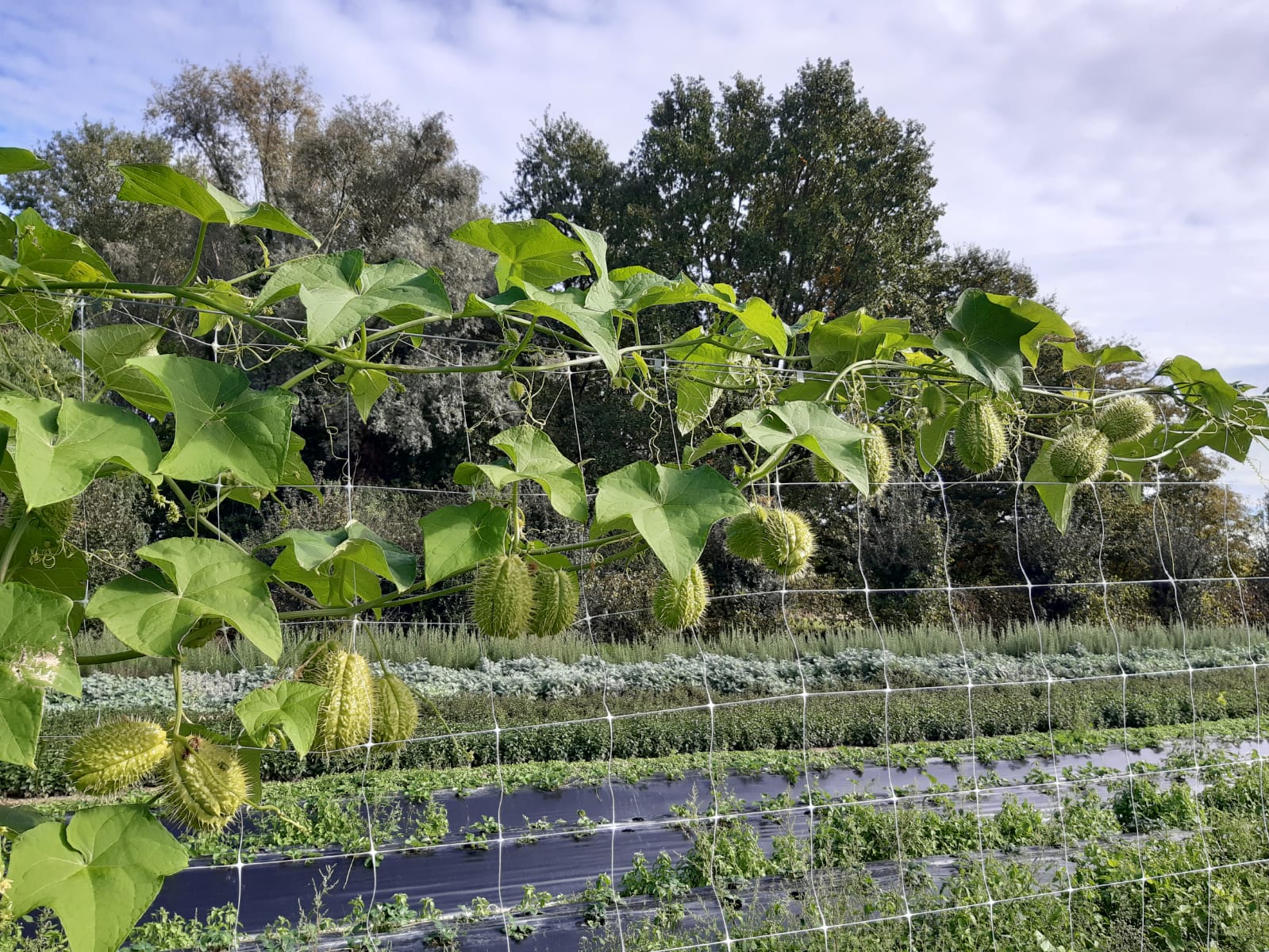
Proposed by our responsible foreign trade consultant Nicola Manno, Severino Bozzolan, Elia's father, immediately seized the opportunity to revive a crop he had seen in his father's fields.
It is therefore a 'forgotten' species that returns to inhabit our countryside!
Below are the technical data sheets
